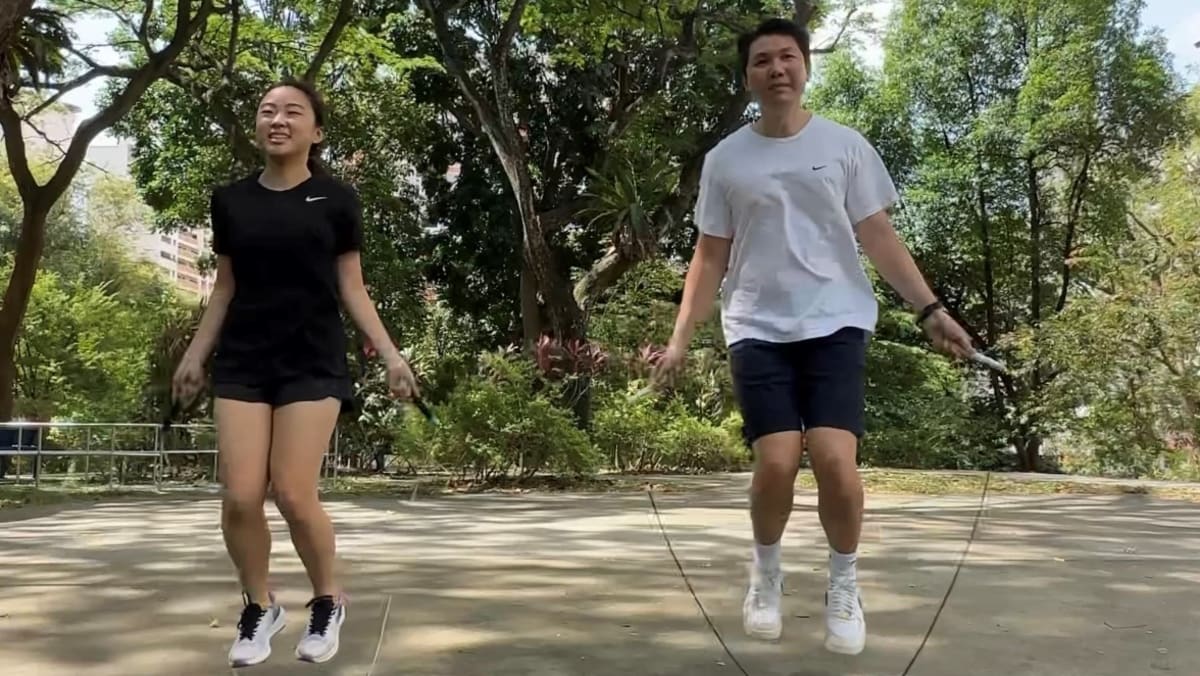If you’re unsure about the basics, such as how to hold, swing and jump over the rope as well as the right rope length to suit your height, there’s the aforementioned Singapore Jump Rope Academy, which has been offering jump-rope programmes for children and adults for over 15 years. Yup, it’s an official school to help you level up on what you used to play after class.
“Adults can learn more high level or intensity skills like Double Under to multiples that are more advanced and challenging,” said Lui.
And don’t get too hung up on the rope type when you’re starting out, he added. Unless you’re competing, which requires pre-approved rope specifications, “the affordable ones from Decathlon or other sports stores will do”.
FOUR TECHNIQUES TO TRY
If you’re starting out at ground zero, take it easy to avoid common injuries related to jumping, such as shin splints, plantar fasciitis, Achilles tendinopathy and stress fractures, said Chow. And wear appropriate footwear that “support your arches and give solid support to your ankles during high-impact exercises to prevent injuries”.
Don’t forget to warm up before you pick up your rope, reminded Chow. “These can include dynamic exercises such as squats, jumping jacks and calf raises.” When you’re done, cool down to “help prevent muscle cramps and dizziness as your breathing rate and heart rate slow”.
Fang recommended the following four techniques to rope in newbies. For a start, do eight counts of each, she said. “To up the intensity, try two sets of eight counts.”
When you’re ready to link up the four techniques, start with two or three sets of the linked sequence, she suggested.
